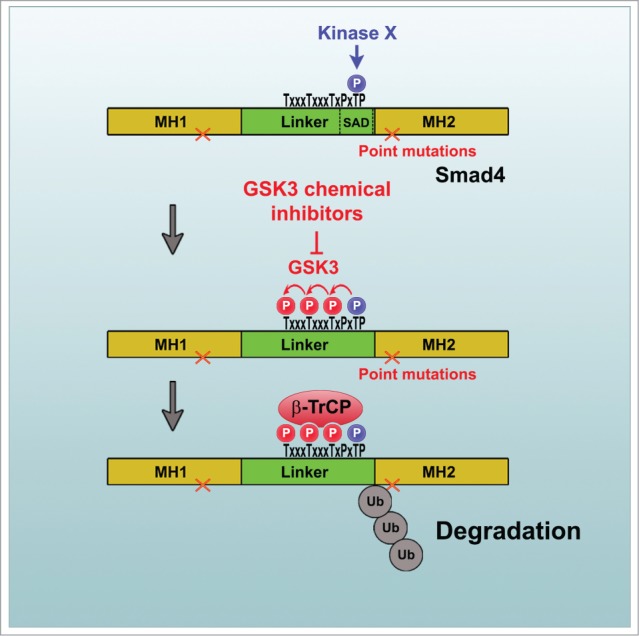Figure 6.

Proposed model of the mechanism by which point mutations in Smad4 increase its degradation via GSK3 phosphorylation. We propose that some Smad4 point mutations commonly found in human cancers may lead to enhanced recruitment of Ras/Erk or other unknown kinases (X kinases) that phosphorylate Thr277, leading to subsequent GSK3 phosphorylations and generating a phosphodegron that is recognized and bound by the E3 ligase β-TrCP. In this model, chemical inhibitors of GSK3 would prevent Smad4 degradation and restore growth control by TGF-β signaling in a subset of Smad4 point mutations.
